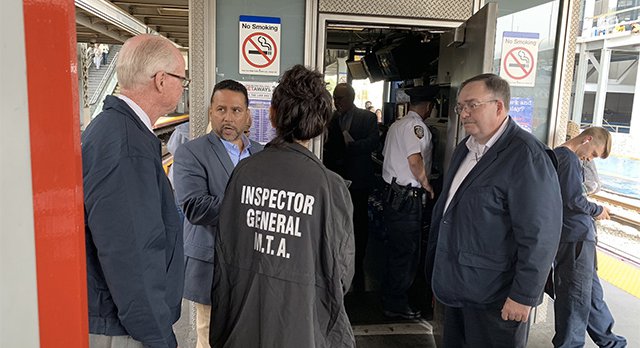After a devastating discovery that a Long Island Railroad foreman was the highest paid MTA employee in 2018, thanks to his 3,864 hours of overtime that year, a subsequent investigation found he was on the clock while on vacation, at a concert, and out bowling. The MTA then agreed to modernize the way it tracks overtime, investing $24 million to install time clocks that use fingerprints to clock in and out of each day, along with several other measures created to curb overtime abuse.
Now, the MTA’s Office of the Inspector General finds that some workers at the MTA still use the “honor system” on sites that don’t have a biometric timekeeping clock—and that the MTA’s $31 million effort to modernize timekeeping and “deter waste, fraud, and abuse” across its divisions could be undone if the MTA doesn’t fully complete the work it began.
MTA Inspector General Carolyn Pokorny’s office notes that the electronic timekeeping has to be connected to all payroll systems at the MTA for it to be truly effective.
“MTA management must continue to commit to the timekeeping-payroll integration,” Pokorny wrote in her report (PDF). “Alternatively, if management plans to abandon the effort this far into the project, then it should be transparent about that decision with the Board and public.”
The OIG’s recent audit of MTA timekeeping found that on paper, the number of employees clocking in and out at New York City Transit (subways), the Long Island Railroad, and Bridge and Tunnels declined over the past few months. The declines were due to a technical error, and not due to fraud.
“However, we are concerned that if management is actually using the dashboard to monitor employee compliance with the swiping requirement, as they should be, this error should have been caught and corrected sooner,” the report noted.
Metro-North and MTA bus workers did show improvement in the use of the digital Kronos timekeeping system.
Still, the rate at which workers clocked in and out dropped from 80% in April and May 2021 to 71% in July and August at the Long island Railroad and subways, a drop for which the MTA didn’t give an explanation.
“The integration is a vital component of the MTA’s overtime reforms, which my Office has demonstrated is critically needed through exposing bad actors and emphasizing the need to decrease wasteful, unverifiable overtime across the MTA,” Pokorny wrote. “Unless the MTA wants to undo hard-fought progress, the integration must happen.”
A spokesperson for the MTA wrote in a statement that from 2018 to 2020 the MTA reduced overtime costs by $250 million, and that the agency’s five-year plan calls for a reduction of $1 billion.
“The MTA continues to address how best to achieve full integration of the Kronos payroll system,” MTA spokesperson Michael Cortez wrote in a statement. “Measures already implemented have resulted in annual overtime expenditures dropping by hundreds of millions of dollars and we are committed to additional material reductions in overtime costs.”
The MTA had hoped to be fully integrated by 2020, but some workers stopped using the biometric Kronos clocks during the pandemic, because it requires using a fingerprint. The union complained there weren’t adequate cleaning supplies for keeping workers safe early in the pandemic and workers swiped a card instead.
The union didn’t return a comment at the time of publishing regarding the OIG’s latest findings.
